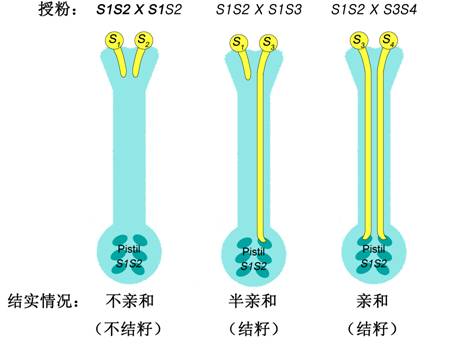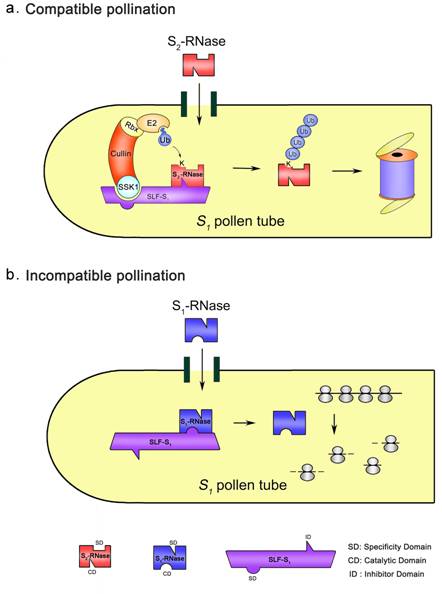Project: The Molecular Mechanism of the Self-incompatibility in Flowering Plants
Host Institution: Institute of Genetics and Developmental Biology, CAS
Main Researchers: XUE Yongbiao, ZHANG Yansheng, LAI Zhao, QIAO Hong and ZHOU Junli
Self-incompatibility is an important intraspecific reproductive barrier widely found in flowering plants. It is estimated that nearly half of the flowering plants have developed some kind of self-incompatibility. In many species, these mechanisms are controlled by a highly polymorphic locus called the S-locus, which encodes components controlling the pistil and pollen expression of self-incompatibility. One of the most widely distributed type of self-incompatibility is found in the Solanaceae, Scrophulariaceae and Rosaceae families.
Although previous studies have proved that S-RNase is the female determinant for the pistil component of self-incompatibility of flowering plants, the male determinant, which determines the pollen component of self-incompatibility remained elusive for a long time. Prof. XUE Yongbiao and his coworkers revealed the molecular mechanism controlling the male determinant in Antirrhinum, a species from Scrophulariaceae family, attracting attention from colleagues over the world.
It is generally accepted that S-RNase acts to degrade RNA of self-pollen tubes, therefore stopping the process of self-pollination. Earlier research suggested that the pollen-S component encodes an S-RNase inhibitor in non-self pollen tubes to block S-RNase from functioning, hence promoting the non-self pollination process. For the first time ever, the team succeeded in cloning a pollen-S gene, the SLF (S-Locus F-box)-S2 from Antirrhinum, and advanced to demonstrate its direct interactions with the S-RNase as well as ASK1- and Cullin1-like proteins of the SCF (Skp1/Cullin or CDC53/F-box) complex. Their follow-up studies revealed that the S-RNase could only be ubiquitinated and degraded in a compatible pollination. Integrating the above discoveries, the team proposed an S-RNase degradation model of self-incompatible pollination.
This discovery proves to have solved an important problem in botany, marking an extraordinary breakthrough in the field of plant sexual reproduction. This achievement also has a strong potential in applied research for breeding of hybrids and generating compatible varieties.
Pictures and captions:

Fig.1: The structure of an Antirrhinum flower. An: anther; F: Flower; Pe: petal; Ov: ovule; St: style.

Fig.2: The genetic control of the pollen-pistil interactions. A self-incompatible pollination, which yields no seeds, occurs when the genotype carried by the pollen (yellow) is the same as the one from the pistil (blue); on the contrary, a compatible pollination proceeds to bear seeds when the reverse happens.
A.< font face="Arial" size="2"> Incompatible pollination: Pollen of S1 and S2 hapolotypes from an S1S2 plant can germinate on S1S2 pistil, but the growth of their pollen tubes is inhibited, resulting in the rejection of “self” pollens.
B.< font face="Arial" size="2"> Half-compatible pollination: Only the pollens of S3 haplotype from an S1S3 plant can germinate and grow towards the ovule, and this leads to fertilization and subsequent seed setting.
C.< font face="Arial" size="2"> Compatible pollination: Both the pollen of S3 and S4 hapolotypes from an S3S4 plant can germinate and reach the ovule, fertilizing it to produce seeds.

Fig.3: The S-RNase degradation model. In a compatible pollination process (a), an SLF protein forms an active SCF complex, which unibiquitinates and degrades S-RNase; while in an incompatible pollination (b), an SLF protein fails to form a functional SCF complex to inactivate S-RNase, resulting in its degrading RNA and inhibiting the growth of pollen tubes.
|



